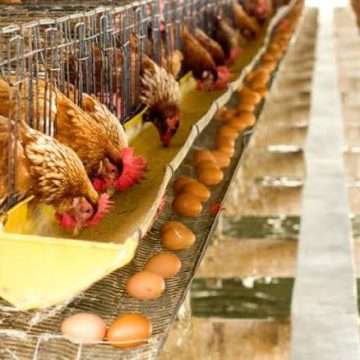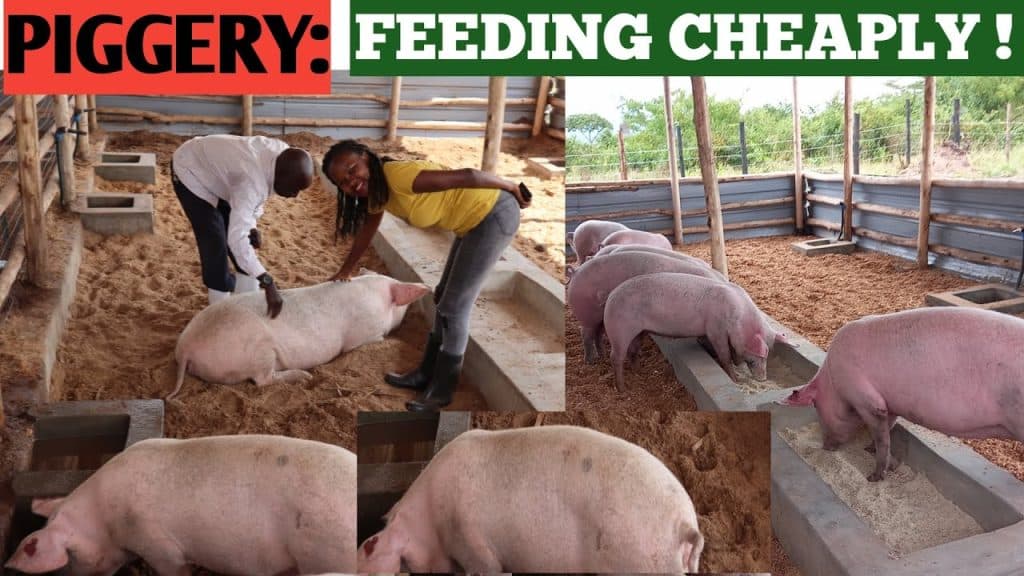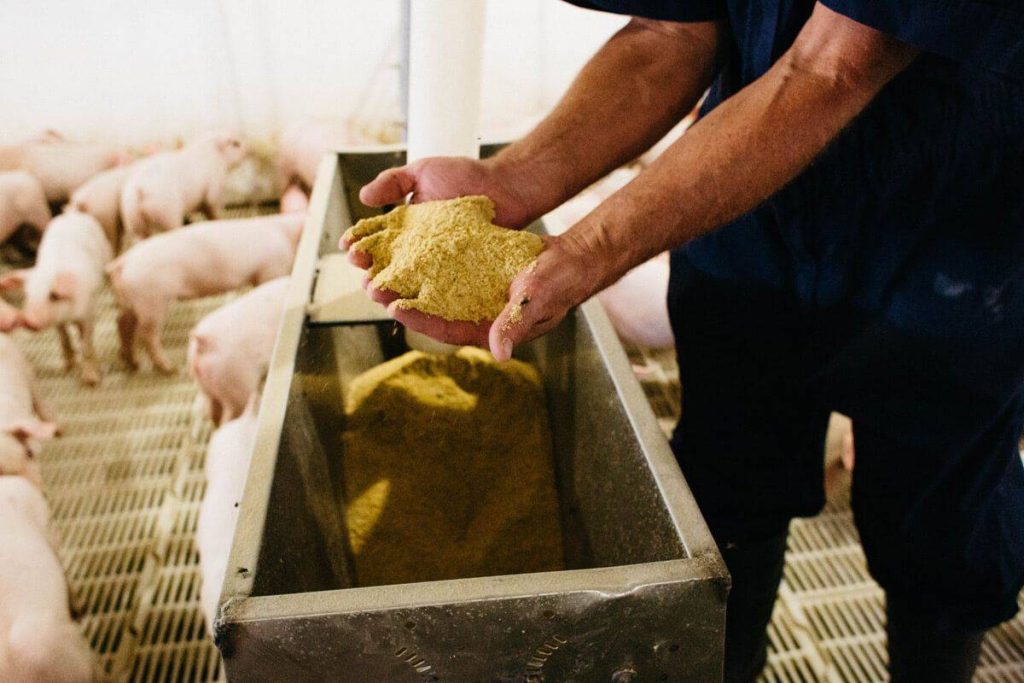Pigs are not ruminants and so are not capable of dealing efficiently with coarse foods.
However, you can feed pigs cheaply with roughages if you add roughages to your pig feeding program.
Foods for pigs usually consist of ground cereals mixed with animal and vegetable proteins all with low fiber content.
These are important ingredients for making pig feed.
How to Feed Pigs cheaply
As a result of the increasing demand and high prices associated with these cereal grains including the vegetable and animal protein sources, some pig producers resulted in use of less expensive energy sources and industrial by-products.
Such cheap ingredients for making pig feeds are cassava root tubers, brewer’s spent grain, and palm kernel meal.
The crude fiber of brewer’s spent grain and palm kernel meal is relatively high and this limits their levels of inclusion in pig diets.
Importance of Rich Pig Feed
Because of the rate at which pigs grow and reproduce and the fact that they spend some or all of their life indoors, their rations require adequate mineral and vitamin supplements.
It is important to feed for the maintenance and growth of the sow or gilt, and pregnancy and milk production
Gilt’s Feed
The gilt from 6 months to mating requires about 2.5 to 3.5kg of feed daily.
There are different types of pig feed but it’s advised to offer food that’s rich in energy, protein, minerals, and vitamins.
These ingredients make a fast-growing pig feed.
You should maintain the 3kg average feed intake per pig up to the first month of pregnancy, that’s the best way to feed pigs.
After the first month of pregnancy or immediately after you notice the signs of pregnancy, you should reduce it a bit and fix it at 2.5kg daily until about the last month of pregnancy when it can be increased to 3kg again.
Whilst practicing pig farmers may be quite successful in varying their feeding rates slightly around those mentioned principles, this pig feeding guide should be followed.
These levels of feeding are designed to supply sufficient nutrients for the maintenance and growth of the pig when pregnant.
The extra food before and in the first month of pregnancy is designed to give a high rate of ovulation and a good rate of conception.
This is a vital time to ensure good litter numbers.
An increase in feeding in the late stages of pregnancy coincides with the greatest demand from the developing fetus, helps to produce bigger pigs at birth, and develops the mammary glands of the gilt.
Weaners and Growers’ Feed
Pigs should be fed the weaner diet up to the weight of 20kg and from then on given the grower diet until they weigh about 60kg.
The diets must be palatable to encourage the pigs to eat the maximum amount and they must be nutritious and well fortified with proteins, minerals, and vitamins if they are to grow well.
The diets should also be of good digestibility, low in fiber, and ground to a suitable degree of fitness.
A weaner’s ration should contain about 20 percent crude protein while that of a grower about 16 percent. Both should have a T.D.N of not less than 75%.
Weaners should be fed adlibitum until they become a problem, and the quantity of feed supplied should be reduced while grass material should be supplied along with feed to increase the fiber intake.
In addition to the above, it may be necessary to feed antibiotics with feeds or give them orally in water.
From about 20kg to 40kg, about 1.3kg of feed should be fed while between 40kg to 60kg, about 1.8kg should be given.
A feed can be supplied twice daily, in the morning and the evening.
Young pigs after weaning mix well with one another and pens often to fifteen are usual; many farmers will bunch them together in much larger groups than this and it is common to find up to fifty running together.
Whether liberal or controlled feeding is practiced, it is most important to ensure that there are adequate troughs to enable all pigs to feed and that these are kept clean any foul food is removed.
Pigs will not eat dirty food, nor will they eat stale or sour food leftover from previous feeds.
Any pig that does not readily eat well along with its mates must be examined closely.
Such a pig if found unwell should be given prompt attention.
It is always wise at the first sign of severe trouble to act quickly and to call in expert advice because pig diseases spread rapidly when stock is housed intensively.
Fattening Pork and heavy pigs
The fattening meal should be introduced from the weight of 60kg of live weight.
It should be fed up to a maximum of 2.7kg daily until a live weight of 80kg is obtained.
The heavy pig sometimes called a heavy hog is usually fed about 3kg to 3.5kg feed daily.
This becomes necessary as the animal puts on an increasing amount of fat up to its slaughter weight of 115kg to 120kg of live weight.
Boar Feed
Boars that are fully matured (from 15 months old) should be given 2.5kg to 3kg daily of a ration of the type fed to sows.
Water and green food should be fed generously but not allowed to become overfat.
A boar should either be kept in a separate pen and sows introduced to him so that he can serve them no more than twice; preferably early and on the last day of the 2 to 3 days period of oestrus.
If he is quiet, he can be run with an in-pig sow, provided only one or two dry sows due for service are introduced at a time.
If a boar is handled quietly, fed correctly, and given plenty of exercise, his active life, which is usually restricted by his developing into too big an animal, is prolonged.
A valuable stock boar can be used on gilts and sows no matter what his size if he is allowed in his younger days to get used to a service crate.
Quite commonly, however, big boars are disposed of at about 4 years of age.
Boars kept for more than 4 years usually become too heavy and this reduces mating performance.
They must be kept in a thin, thrifty condition if they are to maintain sexual activeness.
One boar is capable of serving between 30 to 40 females per month when matured.
The boars below 15 months should be used for fewer numbers.








